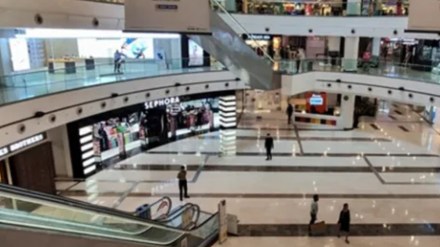Retail leasing is likely to gain added momentum this year, with nearly 8 million sq ft (MSF) of mall supply expected to commence operations across the country, up from 5.95 MSF last year, said real estate services firm Cushman & Wakefield on Friday. Out of this significant addition of retail space, over a third of the inventory will be in superior category malls and nearly half is likely to be in Hyderabad.
With limited availability in malls, retailers are increasingly turning their attention to high streets. The report highlighted a rise in demand and y-o-y rental growth in prominent high streets across key Indian cities, along with emerging retail clusters around residential or commercial hubs. For instance, in Hyderabad, in the first quarter of CY24, main street leasing touched 491,000 square feet— this leasing volume represents a 45% growth compared to the previous quarter, while it aligns closely with the level recorded in Q1, CY23. While main street locations have witnessed a slight uptick in rentals from previous quarters, prominent locations like Banjara Hills, Nallagandla and Kokapet and other prominent main street locations have seen a 15-25% average growth in rentals over the last few quarters, driven by robust demand.
In stark contrast to the pre-pandemic norm, wherein malls would normally take at least four to five quarters to reach 80-85% occupancy, as per the report, grade A or superior malls not only now boast of high pre-commitment rates but are also experiencing vacancy levels dipping to single digits within a couple of quarters of their launch.
The rise of luxury and premium retail spaces also reflects a changing consumer pattern in India, said Saurabh Shatdal, MD, capital markets and head of retail, India. The recent NSSO data showcased a doubling of urban Indian household consumption expenditure over the past decade, with a significant increase in discretionary spending compared to mass products, underscoring this transition. This evolving consumption behavior is directly impacting the retail real estate sector, with a growing demand for premium products and experiences. He added, “This trend highlights a supply-constraint market. We anticipate this trend to continue, especially with superior malls.”
The report revealed that the vacancy rate of grade-A malls across many cities, especially in Delhi-NCR, Pune and Chennai, witnessed a notable decline in the first quarter. This is primarily because Q1 2024 saw no new grade-A mall commencing operations, thereby contributing to a demand-supply imbalance to some extent, it said. Notably, the superior category malls (institutional grade or listed developer assets with high experiential quotient) boast very low vacancy rates (typically in the single digits) in most major cities.
Delhi-NCR received close to 0.26 MSF of leasing across both malls and main streets in Q1-24. In terms of rental growth, prime main streets of Gurugram (Galleria Market) witnessed a 5% growth on y-o-y basis, whereas South Delhi markets such as South Extension and Lajpat Nagar witnessed a 7-10% growth on a y-o-y basis.
